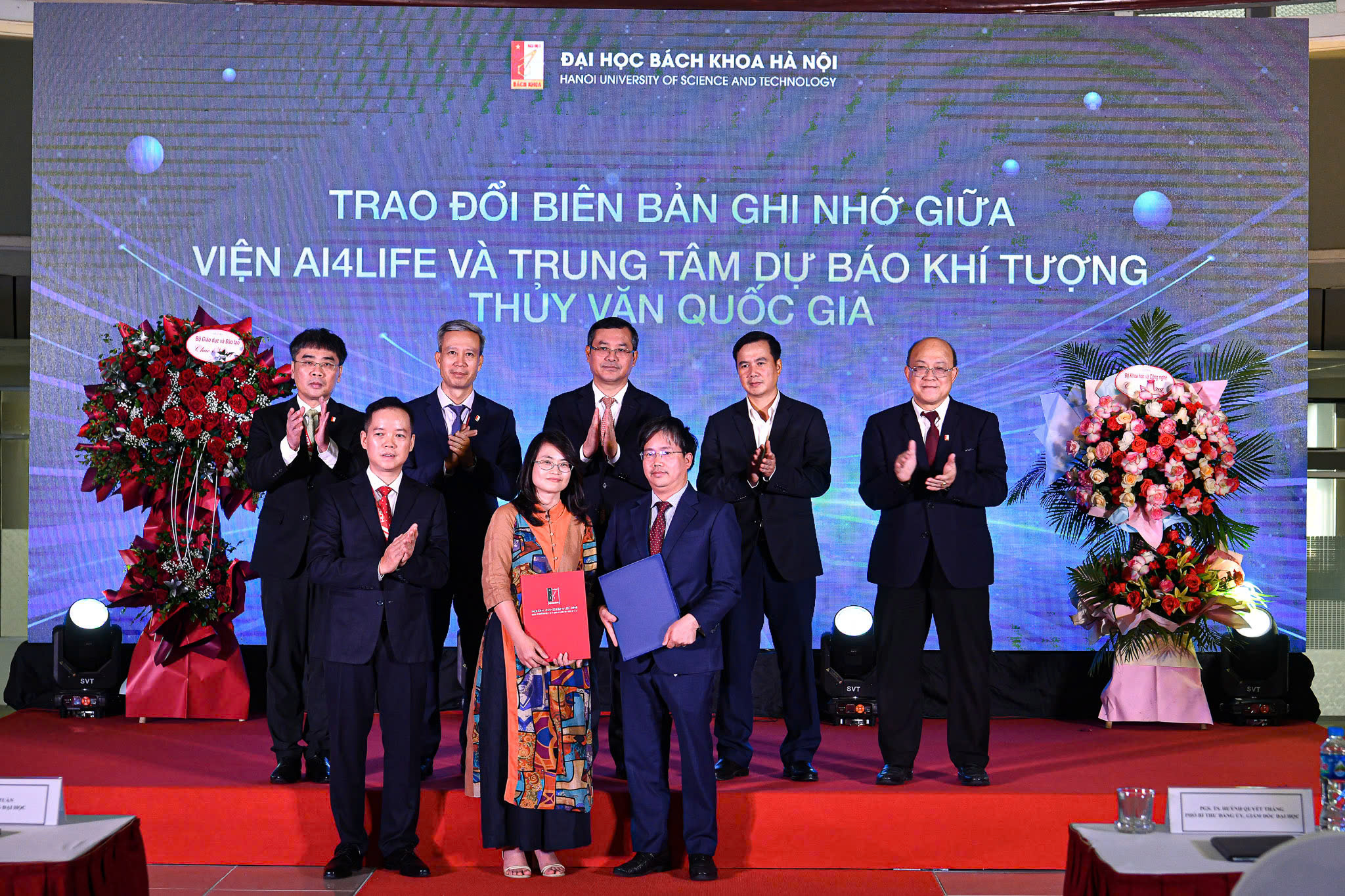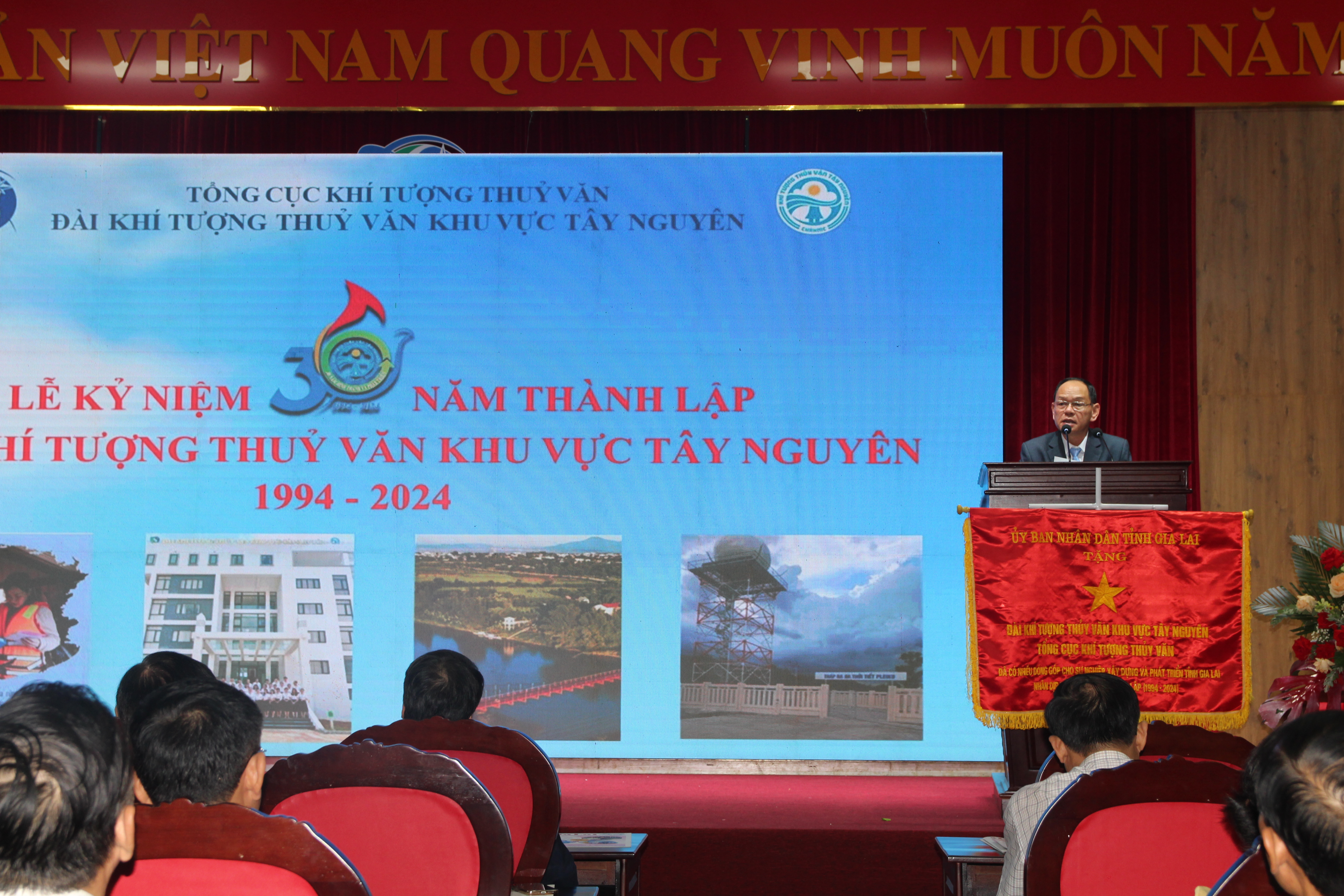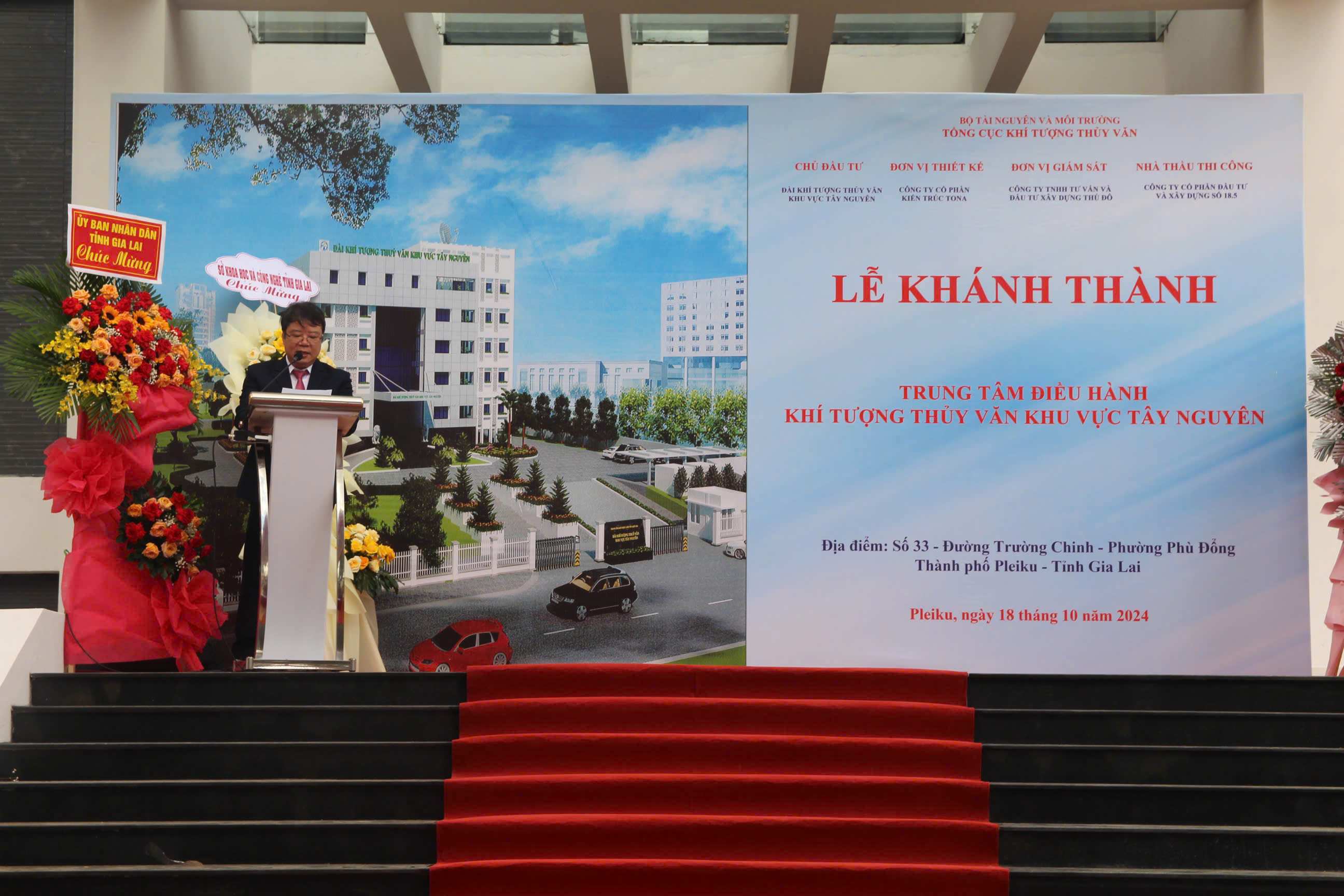|
TT |
Tên bài và tác giả |
Số Trang |
|
1 |
The assessment of visual acuity for low socioeconomic status kids by their environmental factors Yu-Ting Hsiao 1,2, Yi-Ching Chen 3* 1Department of Environmental Engineering, Da-Yeh University, Taiwan; a0908819180@gmail.com 2Public Healthcare Center of Tianwei Town, Taiwan; a0908819180@gmail.com 3Department of Environmental Engineering, Da-Yeh University, Taiwan; yiching@mail.dyu.edu.tw *Corresponding author: yiching@mail.dyu.edu.tw; Tel.: +886–939107419 Abstract: Although many studies have discussed visual acuity (VA), the childhood myopia epidemic has not been alleviated and requires further investigation. In this study, investigations were carried out on the difference in kids’ VA by their environmental factors, such as various family structures, the effect of visual health attitudes (VHA) and visual health behaviours (VHB) on VA. The research subjects are selected for kids in low socioeconomic status (SES) families in Changhua County, Taiwan. This study conducted purposive sampling based on a questionnaire survey and combining a VA examination. There were 260 questionnaires collected, and significantly over 60% of the samples of low SES elementary school kids were not living with their both parents. Of these kids, the highest proportion (33.5%) lived with their mothers, sequentially, 32.7% with their grandparents and 30.0% with their fathers. In fact, 48.8% of these low SES kids’ visions were below 0.9, which is 2.7% higher than the defective vision rate in Taiwan. These kids with poor VA mostly in worse VHA can lead to unhealthy VHB and ultimately to myopia. Some parents at low SES families were busy at making money rather than taking care of kids. Thus, kids addicted to playing 3C products at home without participating in leisure sports result in the rapid increase of myopia. According to the results of the study, “correct” VHA can lead to “correct” VHB; nevertheless, leisure sports participation (LSP) can lead to “correct” VHB for ensuring good VA for kids. Keywords: Visual acuity (VA); Visual health attitudes (VHA); Visual health behaviours (VHB); Low socioeconomic status (SES). |
1 |
|
2 |
Comparative results of the average daily net radiation (Rnd) from meteorological observation data and Landsat–8 remote sensing imagery areas of Hoa Binh province Le Hung Chien1, Doan Ha Phong 2*, Tran Xuan Truong3 1Viet Nam National University of Forestry; chienlh@vnuf.edu.vn 2Vietnam Institute of Meteorology, Hydrology and Climate Changer; doanhaphong.imhen@gmail.com 3Hanoi University of Mining and Geology; tranxtruong75@gmail.com *Correspondence: doanhaphong.imhen@gmail.com; Tel: +84–913212325 Abstract: Net radiation (Rn) is the solar energy absorbed by vegetation and land and water surfaces as a key driving force for evapotranspiration. Therefore, the accuracy of the Rn value affects the determination of evapotranspiration from different models. The article presents the results of calculating the average daily net radiation value according to the FAO–56 model, IRMAK model, and Remote sensing model. The results of calculating the average daily net radiation value at the Hoa Binh province’s meteorological and hydrological monitoring stations according to the FAO–56, IRMAK, and Remote Sensing models have the value of 17.593 MJ/m2/day, 16.389 MJ/m2/day, and 18.531 MJ/m2/day, respectively. The difference of Rnd between the FAO–56 model and the IRMAK model is –1.20 (MJ/m2/day), corresponding to 6.84%, and the difference of Rnd between the FAO–56 model and the Remote sensing model is 0.94 (MJ/m2/day), corresponding to 5.58%. The largest and smallest difference between Rnd_FAO–56 and Rnd_IRM values at Lam Son hydrological station and Hoa Binh meteorological station is –1.885 (MJ/m2/day) match up 10.10%, and –0.31 (MJ/m2/day) match up 1.75%, respectively. In addition, the largest and smallest difference between Rnd_FAO–56 and Rnd_VT values at Lac Son meteorological station and Lam Son hydrological station is 2.80 (MJ/m2/day), corresponding to 17.49%, and 0.23 (MJ/m2/day), corresponding to 1.18%, respectively. The average daily net radiation value due to percentage at meteorological and hydrological monitoring stations between Rnd_FAO and Rnd_VT: the difference of 0–5% is 5/8 stations, 5–10% is 1/8 stations, 10–15% is 1/8 stations and 15–20% is 1/8 stations, accounting for 62.5%, 12.5%, 12.5% and 12.5%, respectively. Keywords: Net Radiation; FAO–56; Irmak; Sebal Manual; Jackson; Hoa Binh. |
9 |
|
3 |
Forecasting saline intrusion under the influence of the northeast monsoon in the Mekong Delta Nguyen Van Hong1*, Nguyen Thao Hien1, Nguyen Thi Thanh Minh1, Ho Cong Toan1 1Sub-Institute of Hydrometeorology and Climate Change; nguyenvanhong79@gmail.com; nthien2710@gmail.com; minhmminh0419@gmail.com; hocongtoanhdh@gmail.com; *Correspondence: nguyenvanhong79@gmail.com; Tel: +84–913613206 Abstract: Saline intrusion is one of the most frequently occurring natural disasters in a coastal area, posing the most serious impact in the Vietnamese Mekong Delta (MD). With the characteristics of the region as an open and low system, located at the end of the Mekong River basin and part of the Vam Co River system, this region is strongly affected by the tidal regime, and therefore saline intrusion is a feature of the region and has become familiar to the people living here in the dry season. The degree of deep penetration into the inland area depends on several factors. These factors contribute to the determination of the depth of salinity penetration into the MD. Therefore, the paper will focus on the 3 factors having the greatest impacts on the salinity penetration, including the influence of upstream flow, high tide, and the northeast monsoon season in the application of a combined assessment model to forecast saline intrusion in 2021 in the Mekong Delta. The reliability of the salinity propagation module is greater than 0.7%, based on the data series observed and calculated daily for 3 months during the dry season. The location of the measuring stations from the estuary to the inland field is about 20–50 km, showing a suitable range to calculate the salinity forecast to support livelihood models in the Mekong River. Keywords: Saline intrusion; Upstream flow; Tide; Southeast wind; Vietnamese Mekong Delta. |
23 |
|
4 |
The application of the cumulative drawdown method in designing of groundwater lowering system - Golden Hill project Le Thi Thuy Duong1*, Can Thu Van 1 1Ho Chi Minh University of Natural Resources and Environment; duongltt@hcmunre.edu.vn; ctvan@hcmunre.edu.vn *Corresponding author: duongltt@hcmunre.edu.vn; Tel.: +84–905777755 Abstract: The presence of groundwater can lead to troublesome conditions when construction operations are to take place below the original groundwater level. There are several techniques or methods available for designing of groundwater lowering systems for a construction project. The selection of a technique or techniques appropriate to a particular project at a particular site or country will depend on many factors. The basic designer’s “tool kit” – the formulae and concepts used in routine designs – are presented and their application discussed. In the case of the Golden Hill project, the author has analyzed the details of the conceptual model, then selected the cumulative drawdown method to design of groundwater lowering system for particular engineering geological – hydrogeological at District 1, Ho Chi Minh City, Viet Nam. The paper does not merely cover the numerical aspects of design, but also discuss some of the issues over which “engineering judgement” must be exercised. Keywords: Groundwater lowering; Dewatering; Pumped well; Cumulative drawdown method. |
37 |
|
5 |
Distribution of perfluoroalkyl substances (PFASs) in the water of the Bac Hung Hai River, Van Giang district, Hung Yen province, Vietnam Huu Tuan Do1*, Lan Anh Phan Thi 2, Ngoc Lam Bui 1 1Faculty of Environmental Sciences, VNU University of Science, Vietnam National University, Hanoi; tuandh@vnu.edu.vn; buingoclamhy1999@gmail.com 2VNU Key Laboratory of Analytical Technology for Environmental Quality and Food Safety Control (KLATEFOS), VNU University of Science, Vietnam National University, Hanoi; lananh@vnu.edu.vn *Correspondence: tuandh@vnu.edu.vn; Tel: +84–2438584995 Abstract: This study investigated and evaluated the quality of PFASs in the water of the Bac Hung Hai River passing through Van Giang district, Hung Yen, Vietnam. PFASs concentration in the river water samples was detected by using LC-MS/MS spectrum. The results showed that the studied river region contaminated PFASs. PFASs concentration ranged from 0.10 to 3.88 ng/l. The average concentrations of individual PFASs were PFBA 5.5, PFPeA 6.8, PFHxA 0.8, PFHpA 0.34, PFOA 0.16, PFNA 0.19, PFDA 0.036, PFHxA 1.34, PFOS 0.074, PFDS 0.037. The research results show that the distribution of PFASs in the Bac Hung Hai River is not uniform and depend on the discharge sources. Keywords: PFASs contaminants; PFOA, PFOS, Bac Hung Hai; River pollution. |
46 |
|
6 |
Research on assessment of surface water quality of Hau river in An Giang province on the basis of physicochemical parameters and zooplankton system Phu Huynh 1*, Ngoc Thao Nguyen Ly 1, Ngoc Han Huynh Thi 2, Ngoc Nu Tran 3 1HUTECH University; h.phu@hutech.edu.vn; nln.thao@hutech.edu.vn; 2Hochiminh City University of Nature Resources & Environment; htnhan_ctn@hcmunre.edu.vn; 3Researcher: tngocnu043@gmail.com *Correspondence: h.phu@hutech.edu.vn; Tel.: +84–966687548 Abstract: Research on water quality assessment of Hau river in An Giang province was conducted in 2019 in the upper Hau river (SH–T) and downstream Hau river adjacent to Can Tho (SH–H) through the following physico–chemical parameters, heavy metals: temperature, pH, Dissolved Oxygen (DO), COD, BOD5, Total Suspended Solids (TSS), Nitrate (NO3– by N), Phosphate (PO43– by P), Coliform, Arsenic (As), Lead (Pb), Mercury (Hg), Ammonium (NH4+ by N) and zooplankton system. Research results showed that: (1) Surface water quality in the area showed signs of pollution, DO content: 3.02–5.97 mg/l, lower than the standard (≥ 6 mg/l); TSS parameters: 35–90 mg/l, 1.75–4.5 times higher than standard; COD: 10–23 mg/l, 1.1–2.2 times higher than standard; BOD5: 7–14 mg/l, 1.75–3.5 times higher than standard; Ammonium: 0.039–1.14 mg/l higher than standard 1.63 times in March and 3.83 times in September; Coliform: 2.100–24.000 MNP/100ml, not guaranteed well according to QCVN 08–MT:2015/BTNMT (level A1); (2) Surface water quality in the upper Hau river area according to diversity index H’: 0.91 in March at “Heavily polluted” and H’: 1.89 in September, at “Moderately polluted”; (3) The results of statistical analysis and PCA showed that the water quality parameters had significant differences between the two seasons, the rainy season showed signs of Coliform pollution and TSS more than the dry season. Keywords: An Giang; Water quality; Diversity index H’; Tu Giac Long Xuyen |
54 |
|
7 |
Sources of sedimentary organic carbon in coastal ecosystems from the Tien Yen Bay, Quang Ninh Luu Viet Dung1,2*, Pham Thao Nguyen3, Nguyen Thi Hoa4, Nguyen Thi Tuyet Chinh2, Nguyen Tai Tue1,2, Tran Dang Quy 1,2, Mai Trong Nhuan1,2 1Key Laboratory of Geoenvironment and Climate Change Response, VNU University of Science, Vietnam National University, Hanoi, Vietnam; dungluuviet@gmail.com; tuenguyentai@hus.edu.vn; quytrandang@gmail.com; nhuanmt@vnu.edu.vn 2 Faculty of Geology, VNU University of Science, Vietnam National University, Hanoi, Vietnam; dungluuviet@gmail.com; nguyenthituyetchinh97@gmail.com; tuenguyentai@hus.edu.vn; quytrandang@gmail.com; nhuanmt@vnu.edu.vn; 3Graduate School of Science and Engineering, Ehime University, Matsuyama Japan; thaonguyen3m@gmail.com 4Vietnam – Japan University, Vietnam National University, Hanoi, Vietnam; 19110009@st.vju.ac.vn *Correspondence: dungluuviet@gmail.com; Tel.: +84–904729009 Abstract: Mangroves in Tien Yen Bay, Quang Ninh province are considered typical mangrove ecosystems in Northern Vietnam. Mangroves play a significant role in carbon storage, and mangrove sediment is the largest carbon pool in this ecosystem. The present study aims to determine the role of the carbon source from mangroves to provide the organic matter in intertidal sediments by the stable isotopes approach. The δ13C of sediments ranged from –27.36 ± 0.28‰ in mangrove forest (RNM) to –26.28 ± 0.05‰ in the tidal flat with seagrass (SG1). Stable isotope mixing model results showed that mangrove materials are an important source of sedimentary organic carbon (OC), providing 64.6 ± 14.9%, 38.4 ± 14.9%, 39.8 ± 15%, and 48.8 ± 14.9% for the site RNM, SG1, SG2, and SG3, respectively. The second OC source in mangrove sediment is suspended particulate organic matter (POM). The POM in this area includes fine mangrove materials, which are exchanged with coastal waters through the tidal dynamics. The present results suggested that mangroves are important in accumulating organic carbon and fine–grained sediments in the Tien Yen Bay, contributing important values to climate change mitigation and maintaining biodiversity in this area. Keywords: Carbon sources; Mangroves; Stable isotopes; Sediment; Tien Yen. |
76 |
|
8 |
Linking hydrological, hydrodynamic models for saline intrusion assessment – Applying for Ve river estuary as a case study Bui Ta Long 1,2*, Le Thi My Diep3 1 Ho Chi Minh City University of Technology; longbt62@hcmut.edu.vn 2 Vietnam National University Ho Chi Minh City; longbt62@hcmut.edu.vn 3 The Southern Institute of Water Resources Research; diepmoitruongqn@yahoo.com.vn *Corresponding author: longbt62@hcmut.edu.vn; Tel.: +84–918017376 Abstract: Researches on combination of hydrological and hydrodynamic models are very important when performing risk assessment and disaster management, including saline intrusion, which is especially important for watersheds, with limited measurement data. The objective of this study is linking two types of hydrological and hydrodynamic models to simulate the scope of salinity intrusion in the Ve estuary, Quang Ngai province. Firstly, SWAT/NAM is applied to calculate flow rate, and then MIKE 21/3 model is applied for hydraulic and salt intrusion simulation. The calibration and validation are also done to show that the acceptable reliability of simulation. Simulation results showed that salinity intrusion depends on water discharge, water level, tidal regime according to dry and wet seasons; the longest distance of saline intrusion from the river mouth is 5.47 km, occurring in the dry season. Keywords: Rainfall-Runoff; SWAT/NAM; MIKE 21/3; Salinity Intrusion; Ve River. |
86 |
|
9 |
Assessment of water resources using comprehensive sustainability indicators for water and land resources - a pilot study for the Southern Hau River basin Le Thi Mai Van1* , Nguyen Viet Tung2, Le Manh Hung3, Bui Thi Bich Ngoc1, Doan Quang Tri4, Truong Viet Chau1, Bui Van Dung2, Truong Van Hung1, Dang Hoang Ha1 1Centre for Water Resources Warning and Forecasting (CEWAFO), National Center for Water Resources Planning and Investigation; lethimaivantnn@gmail.com; bichngoc209hunre@gmail.com; truongvietchau.tnn@gmail.com; truongvanhung888@gmail.com hadangld2@gmail.com. 2National Center for Water Resources Planning and Investigation; tungwr@gmail.com; dungtvb88@gmail.com 3University of Virginia; hml5rn@virginia.edu 4Vietnam Journal of Hydrometeorology, Viet Nam Meteorological and Hydrological Administration; doanquangtrikttv@gmail.com *Corresponding author: lethimaivantnn@gmail.com; Tel.: +84–982420298 Abstract: Currently, water resources planning is paying attention in Vietnam with several master plans established in some large basins across the country. However, in the context of water resources planning, the water allocation task still has inconsistency in calculation methodology. Therefore, this study aims to provide a set of indicators to estimate water and land resources to serve as the foundation for water resources allocation task. We have been used the following methods: (i) data collection, analysis and processing; (ii) field surveying; (iii) expert consultation; and (iv) mathematical modelling. We selected the Southern Hau River basin (SHRB) as our pilot study. The results indicate that the total amount of surface water from the Hau River supplying to the entire SHRB region in the dry season months (January to April) is about 487 million m3/month. The total amount of groundwater (saltwater and freshwater) is 35.5 million m3/day, with 16.7 million m3/day coming from freshwater. The SHRB has a great variation in season - 3.8 billion m3 (19%) for the dry season and 16.19 billion m3 (81%) for the flood season. The outcomes of this study provide basis information for implementing water resources planning’s steps in allocating water resources to the SHRB’s sub–basins. Keywords: Indicator; Sustainability; Water Resources; Land Resources; Southern Hau River basin. |
101 |


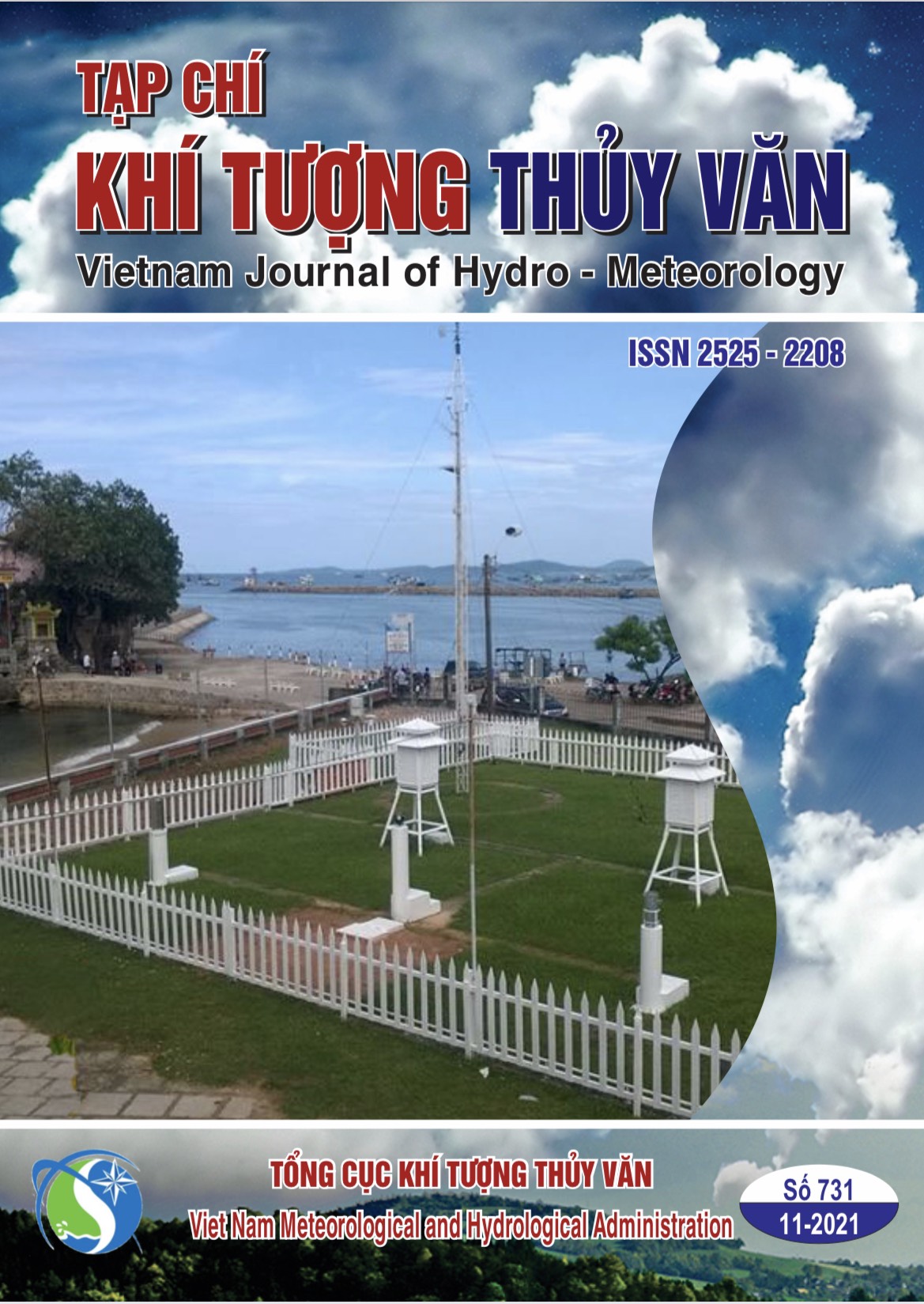
.jpg)
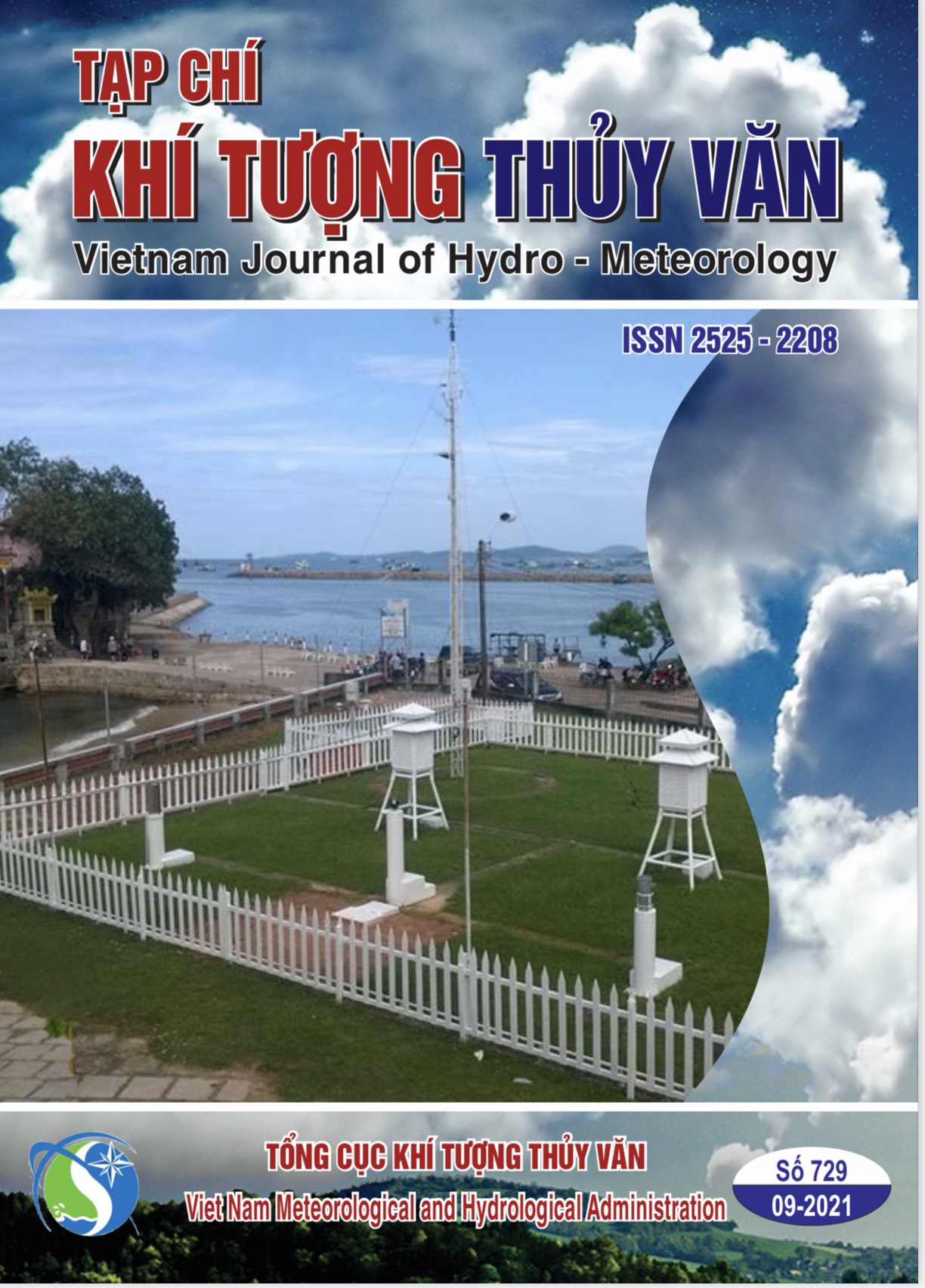

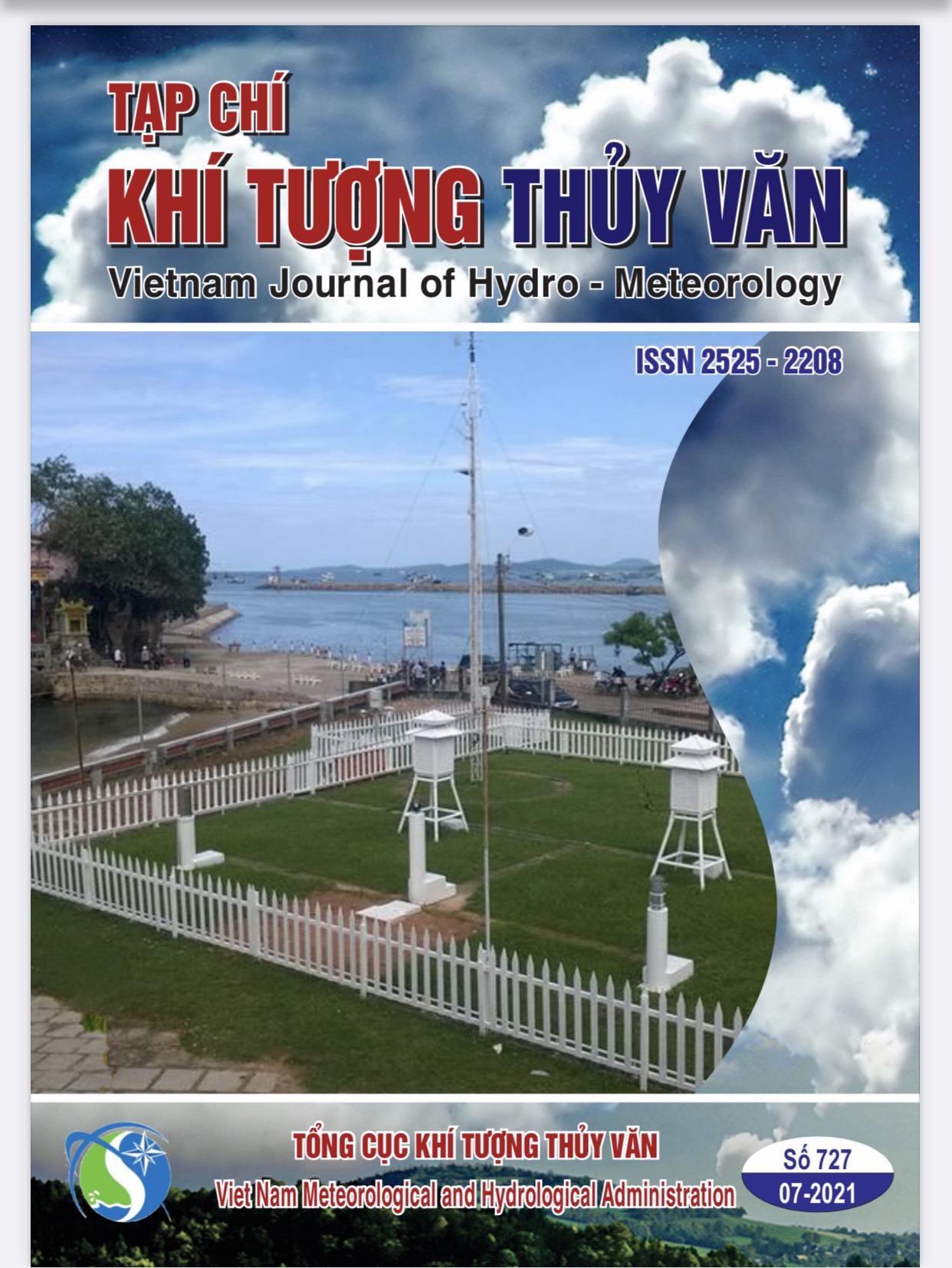
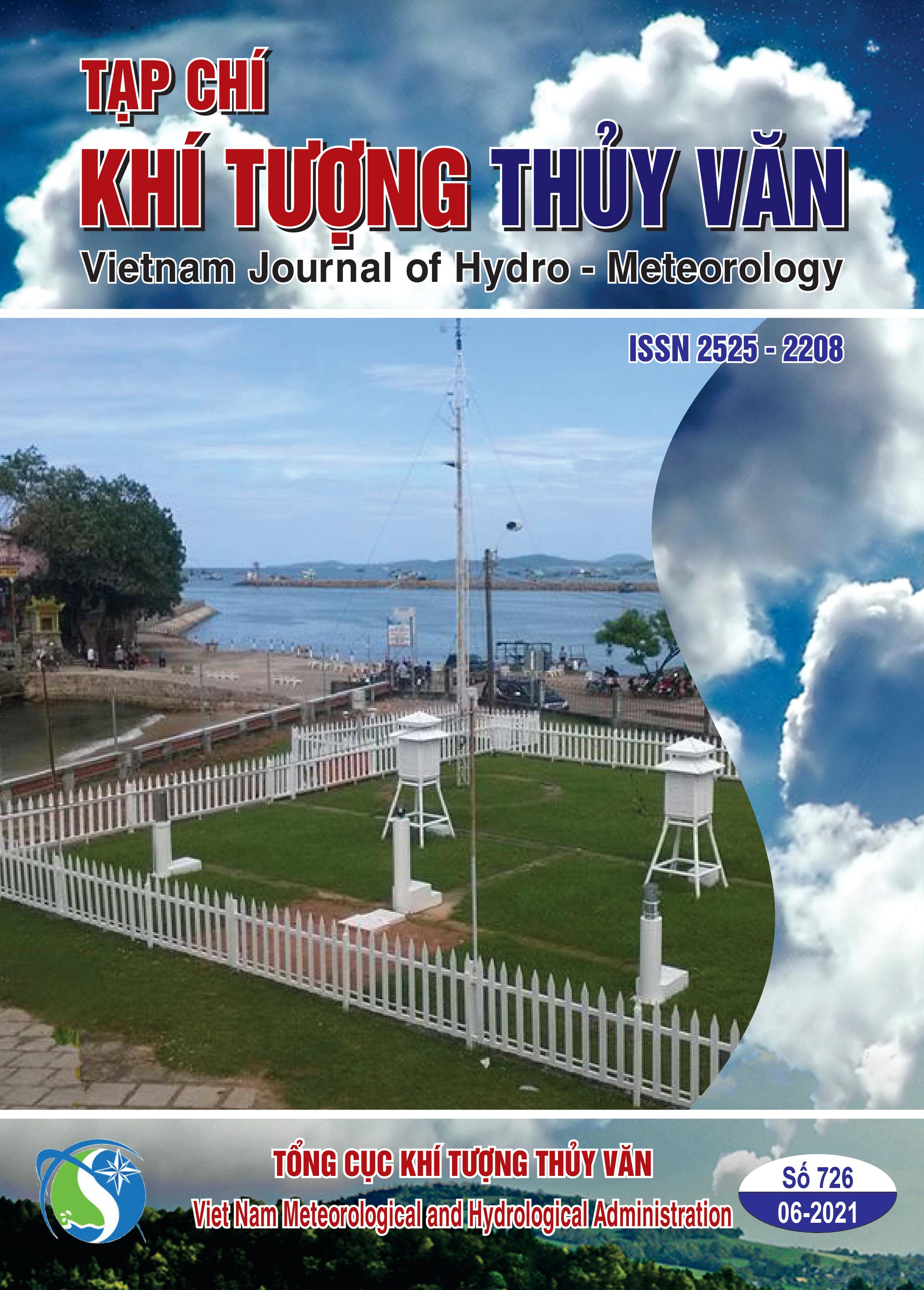

.jpg)
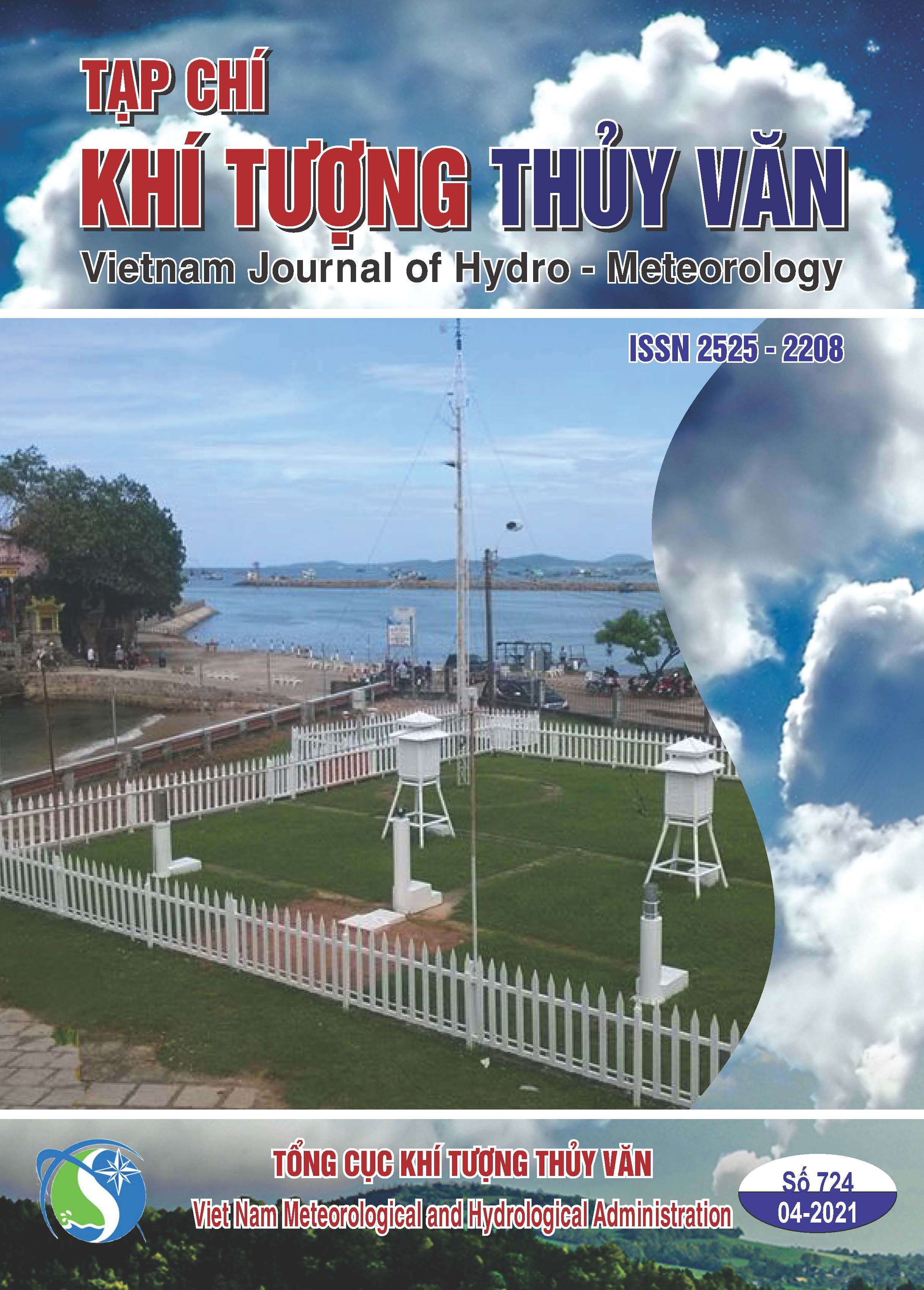
.png)
.png)
 Theo Trung tâm Dự báo khí tượng thủy văn quốc gia, hồi 4 giờ ngày 11-11, vị trí tâm bão số 7 ở vào khoảng 17,5 độ Vĩ Bắc; 111,8 độ Kinh Đông, trên vùng biển phía Bắc quần đảo Hoàng Sa. Sức gió mạnh nhất vùng gần tâm bão mạnh cấp 8, giật cấp 10. Di chuyển theo hướng Tây Nam, tốc độ khoảng 15 km/giờ.
Theo Trung tâm Dự báo khí tượng thủy văn quốc gia, hồi 4 giờ ngày 11-11, vị trí tâm bão số 7 ở vào khoảng 17,5 độ Vĩ Bắc; 111,8 độ Kinh Đông, trên vùng biển phía Bắc quần đảo Hoàng Sa. Sức gió mạnh nhất vùng gần tâm bão mạnh cấp 8, giật cấp 10. Di chuyển theo hướng Tây Nam, tốc độ khoảng 15 km/giờ. 
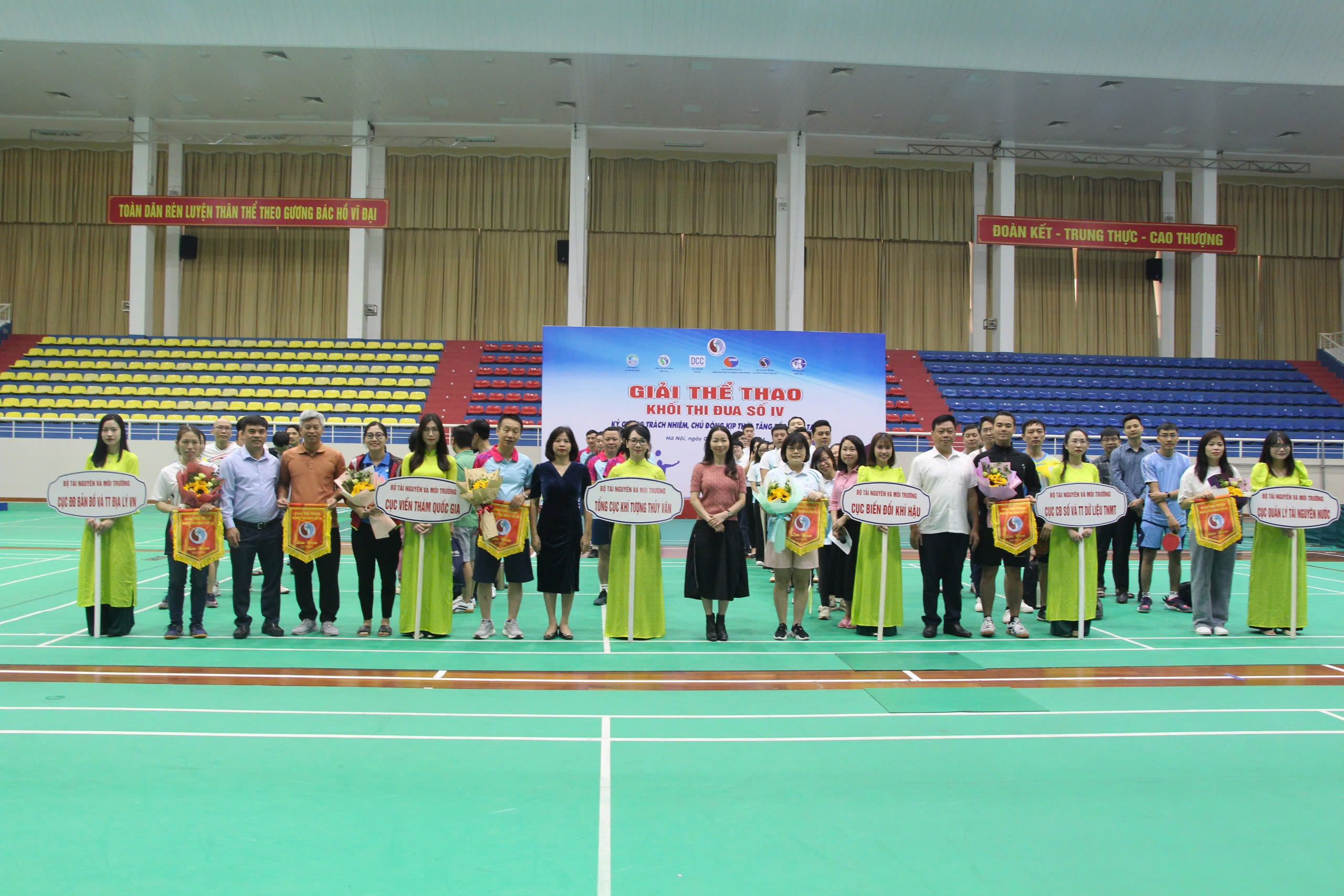
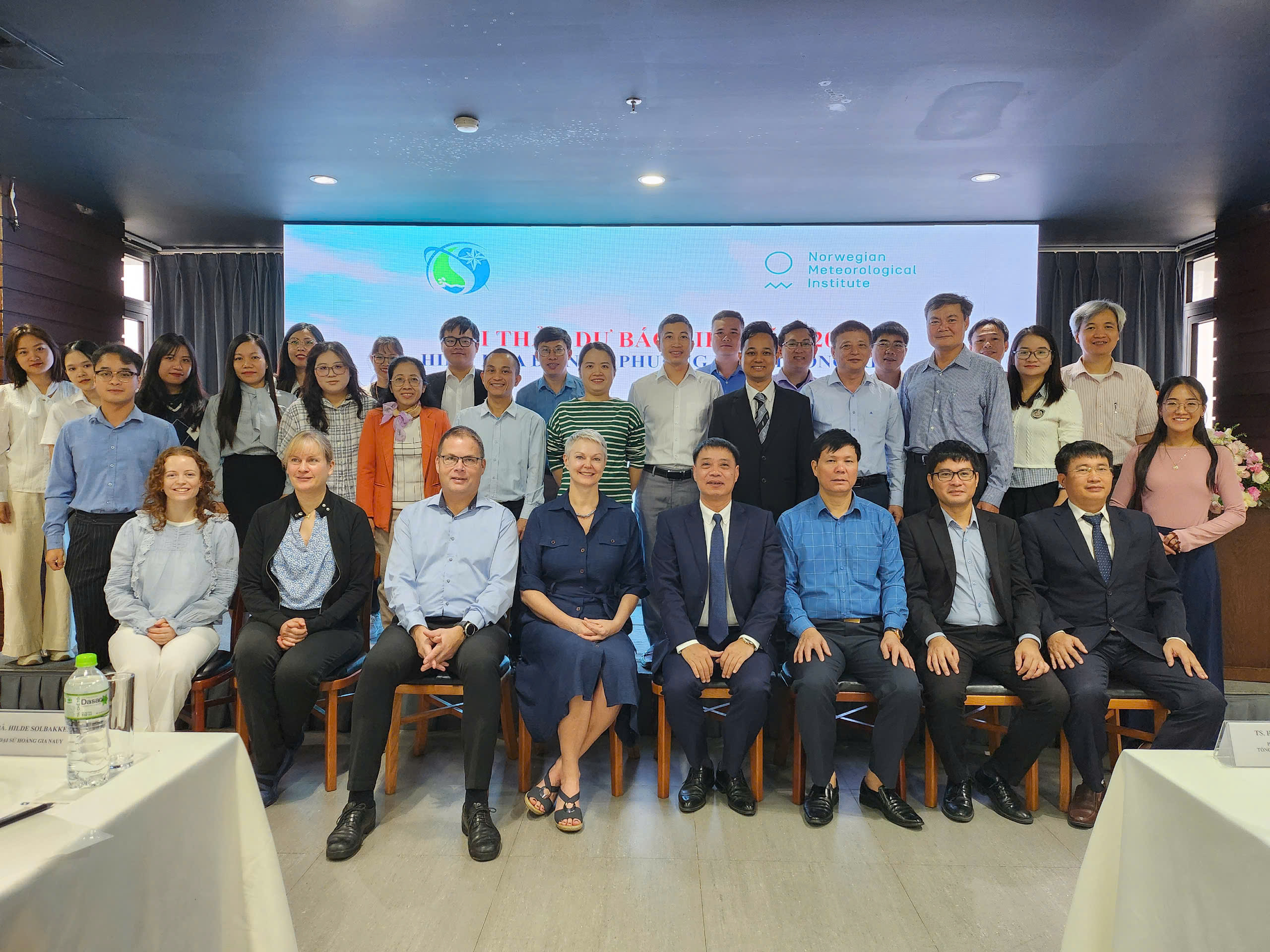
.jpg)
